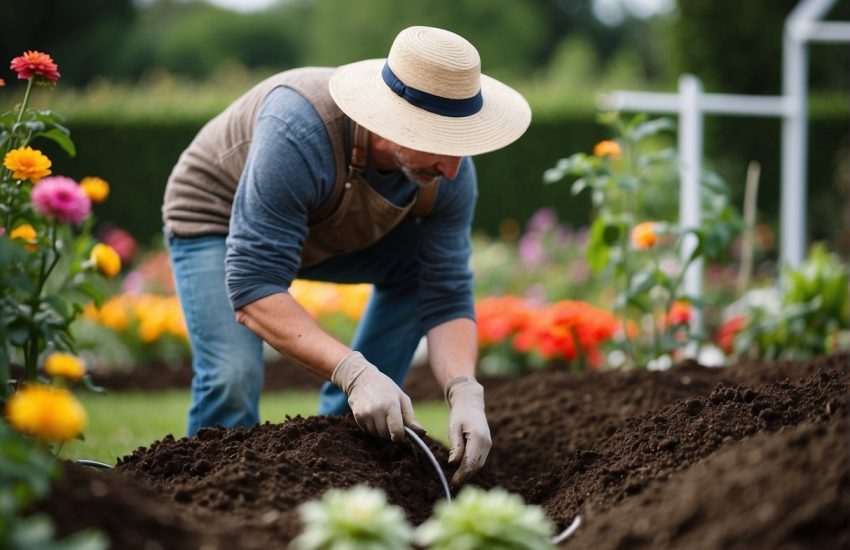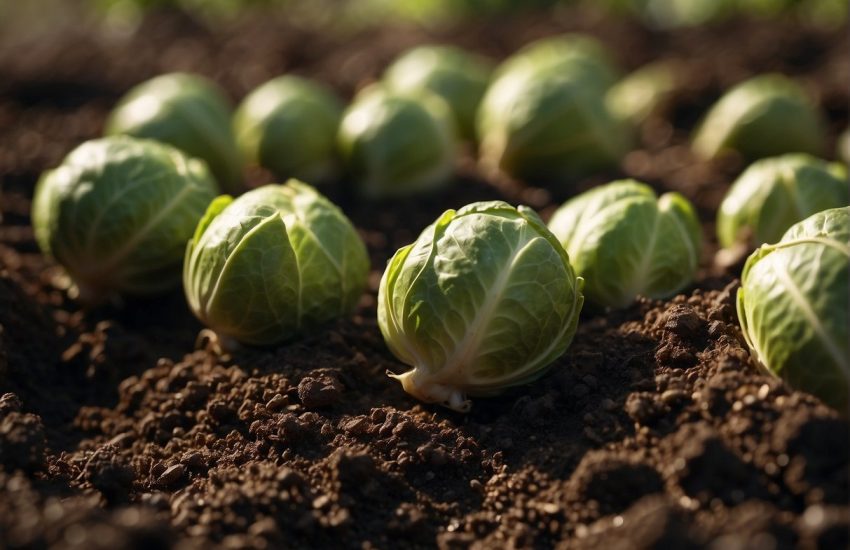How to Propagate Dracaena: A Step-by-Step Guide
Dracaena is a popular houseplant that is known for its striking foliage and low maintenance care requirements. Propagating dracaena can be a fun and rewarding way to expand your collection of plants or share them with friends and family. Whether you’re a seasoned plant parent or a beginner, learning how to propagate dracaena is a simple process that can be done with just a few basic tools and materials.
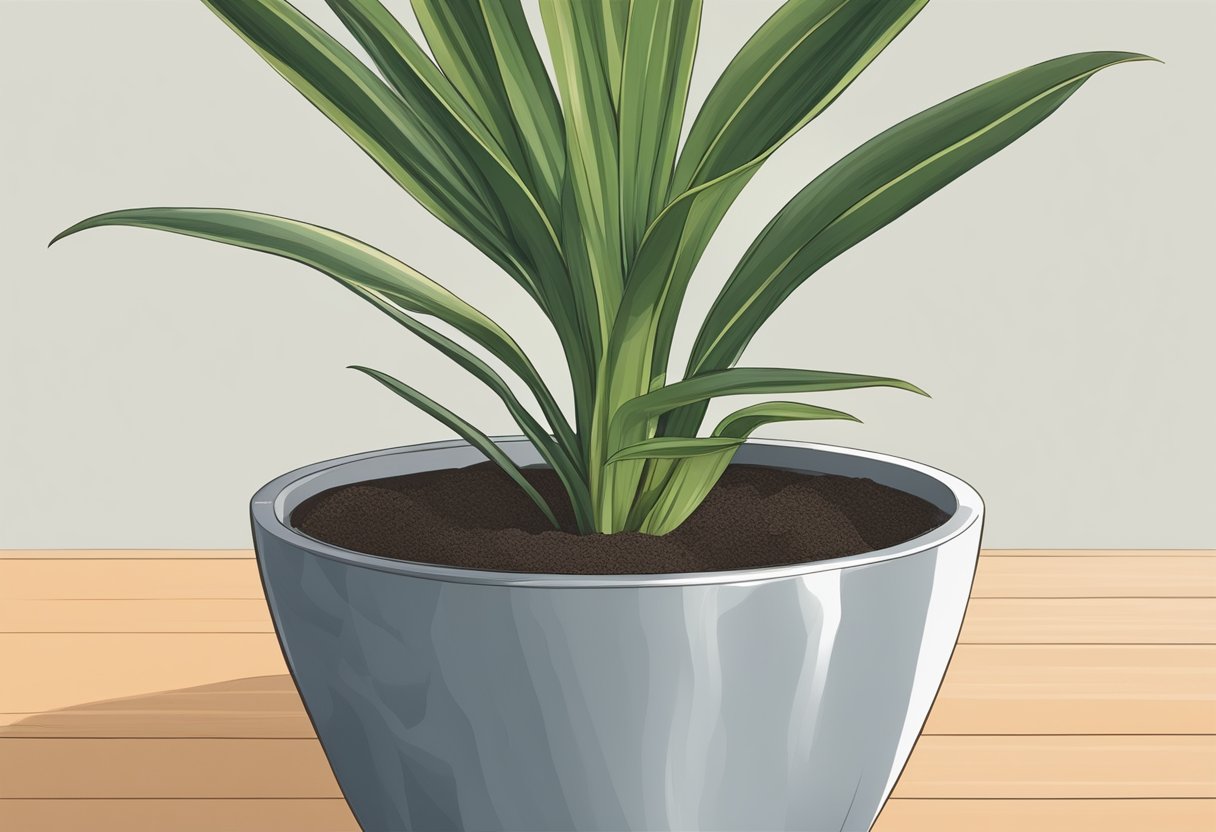
There are several methods for propagating dracaena, including stem cuttings, air layering, and division. Each method has its own advantages and disadvantages, and the best method for you will depend on the type of dracaena you have and your personal preferences. With a little patience and some basic knowledge, you can successfully propagate dracaena and enjoy the beauty of this versatile plant in your home or garden.
Understanding Dracaena Propagation
Types of Dracaena
Dracaena is a genus of plants that includes over 120 species of trees and shrubs. Some of the most popular species for indoor gardening include Dracaena marginata, Dracaena fragrans, and Dracaena deremensis. Each species has its own unique characteristics, but they all share some common traits that make them ideal for propagation.
Propagation Basics
Propagation is the process of creating new plants from existing ones. There are several methods of propagating dracaena, including stem cuttings, leaf cuttings, and air layering.
Stem cuttings are the most common method of propagation. To propagate dracaena using stem cuttings, take a cutting from the plant’s stem that is at least 4-6 inches long. Remove the lower leaves from the cutting and dip the cut end in rooting hormone. Plant the cutting in a pot filled with well-draining soil and keep it moist until it roots.
Leaf cuttings are another method of propagation, but they are less common. To propagate dracaena using leaf cuttings, take a leaf from the plant and cut it into sections. Plant the sections in a pot filled with well-draining soil and keep them moist until they root.
Air layering is a more advanced method of propagation that involves creating a small wound on the stem of the plant and then wrapping it with moist sphagnum moss. The plant will grow roots from the wound, and once they have formed, the stem can be cut and planted in a pot.
Overall, dracaena is a relatively easy plant to propagate, and with a little knowledge and patience, anyone can create new plants from existing ones.
Preparing for Propagation
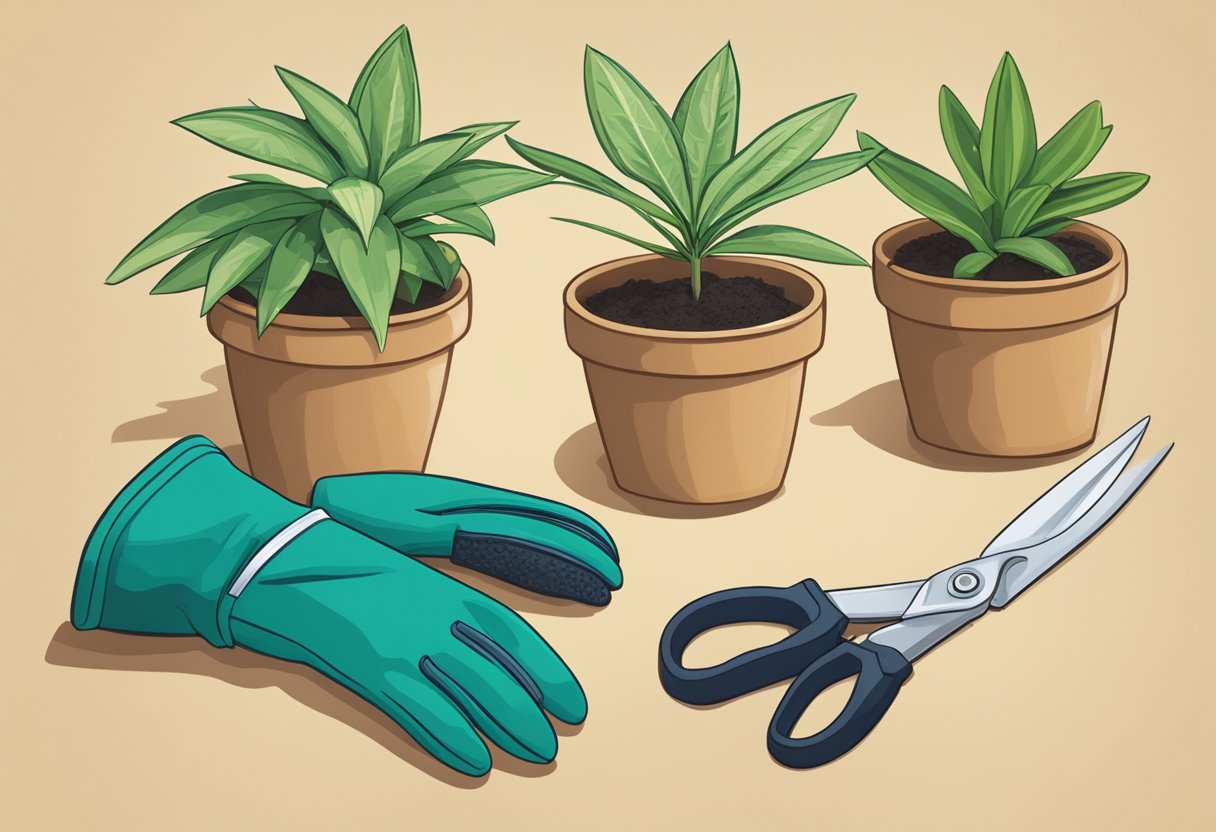
Selecting a Healthy Parent Plant
The first step in propagating dracaena is to select a healthy parent plant. A healthy parent plant will produce strong and healthy cuttings, which will increase the chances of successful propagation. Look for a parent plant that is free from pests and diseases, and has healthy foliage. The leaves should be green and firm, and there should be no signs of wilting or yellowing.
Gathering Necessary Tools
Before propagating dracaena, it is important to gather all the necessary tools. The tools needed for propagating dracaena include a sharp, sterile cutting tool, rooting hormone, a container with drainage holes, and a well-draining potting mix. A sharp cutting tool will ensure that the cuttings are clean and precise, while rooting hormone will encourage the cuttings to root quickly. The container should have drainage holes to prevent water from accumulating and causing the cuttings to rot. A well-draining potting mix will ensure that the cuttings have the right moisture level to root successfully.
Once the parent plant has been selected and the necessary tools have been gathered, it is time to move on to the next step in propagating dracaena.
Propagation Methods
Dracaena is a popular houseplant that is relatively easy to propagate. There are several methods that can be used to propagate dracaena, including stem cutting propagation, water propagation, air layering method, and division.
Stem Cutting Propagation
Stem cutting propagation is a common method of propagating dracaena. To propagate through stem cutting, cut a stem with a sharp, sterilized knife, making sure the cutting is at least 4 inches long and has a few leaves. Dip the cut end of the stem in rooting hormone and plant it in a well-draining soil mix. Keep the soil moist and in a warm, bright location. The cutting should root in a few weeks.
Water Propagation
Water propagation is another method of propagating dracaena. To propagate through water, cut a stem with a sharp, sterilized knife, making sure the cutting is at least 4 inches long and has a few leaves. Place the cutting in a jar of water, making sure the bottom of the stem is submerged. Change the water every few days and keep the jar in a bright, warm location. The cutting should root in a few weeks.
Air Layering Method
The air layering method is a more advanced method of propagating dracaena. To propagate through air layering, select a healthy stem and make a small cut in the bark. Wrap the cut area with moist sphagnum moss and cover it with plastic wrap. Keep the moss moist and in a bright, warm location. After a few weeks, roots should form in the moss. Cut the stem below the moss and plant it in a well-draining soil mix.
Division
Division is a method of propagating dracaena that involves separating the plant into smaller sections. To propagate through division, carefully remove the plant from its pot and separate the roots into smaller sections, each with a few stems and leaves. Plant each section in a well-draining soil mix and keep the soil moist and in a bright, warm location. The new plants should establish themselves in a few weeks.
Overall, propagating dracaena is a simple process that can be done through several different methods. By following the above methods, one can easily propagate dracaena and have multiple plants to enjoy.
Rooting and Plant Care
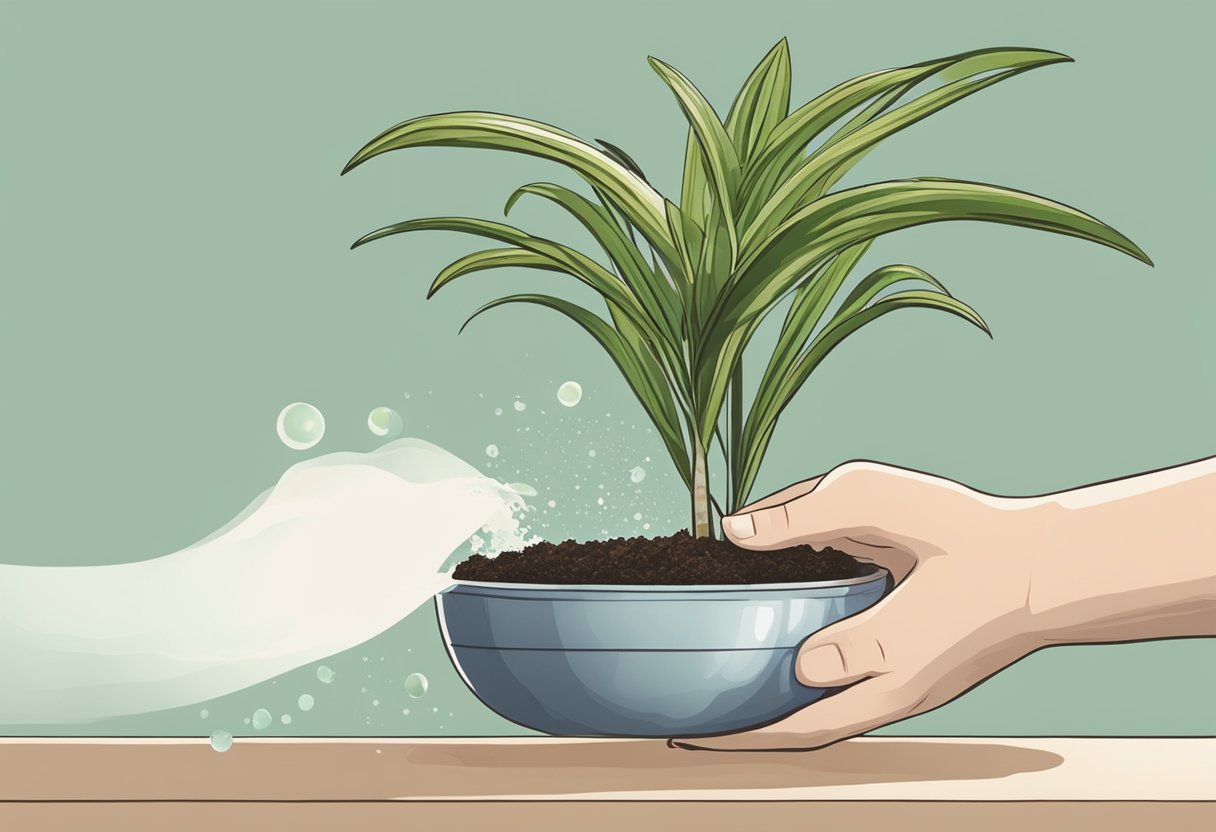
Using Rooting Hormone
Rooting hormone is a great way to boost root development in dracaena cuttings. It contains a synthetic plant hormone that stimulates root growth and helps the cutting establish itself in new soil. To use rooting hormone, dip the end of the cutting in the powder and shake off any excess before planting in soil or water.
Providing Optimal Conditions
Dracaena cuttings need indirect light and consistent moisture to root successfully. Place the cuttings in a bright, but not direct, location and avoid exposing them to harsh sunlight or extreme temperatures. Keep the soil moist, but not waterlogged, and mist the foliage regularly to prevent it from drying out.
If propagating in water, change the water every few days to prevent bacterial growth and ensure the cutting has access to oxygen. If propagating in soil, make sure the soil is well-draining and avoid overwatering to prevent root rot.
By following these simple steps, anyone can successfully propagate dracaena plants and enjoy the beauty of these tropical beauties in their home or garden.
Potting and Soil Requirements
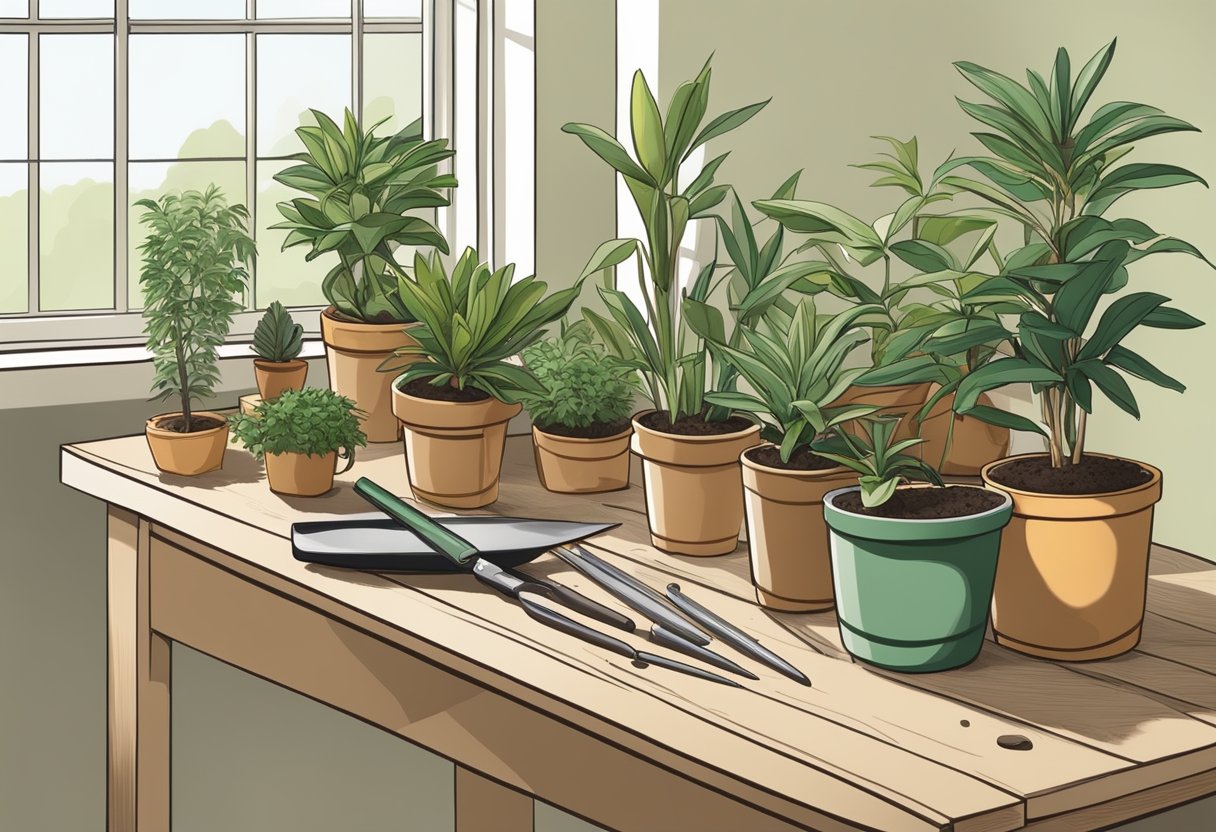
Choosing the Right Container
When propagating dracaena, it’s important to choose the right container. The container should be large enough to accommodate the plant’s root system, but not so large that the soil stays too wet. A pot that is too large can lead to overwatering, which can cause root rot. It’s also important to choose a container with drainage holes to ensure proper water drainage.
Preparing the Potting Mix
The potting mix used for propagating dracaena should be well-draining and nutrient-rich. A mix of peat moss, perlite, and well-draining soil is ideal. Peat moss helps to retain moisture while perlite and well-draining soil ensure proper drainage. It’s important to avoid using heavy soils that can retain too much water and lead to root rot.
To prepare the potting mix, combine equal parts peat moss, perlite, and well-draining soil. Mix the ingredients thoroughly and moisten the mix with water. The potting mix should be moist but not waterlogged.
When potting the dracaena, fill the container with the prepared potting mix, leaving enough room for the plant’s root system. Gently place the plant in the center of the container and backfill with additional potting mix, ensuring that the plant is at the same level it was previously planted. Gently firm the soil around the plant and water thoroughly.
Aftercare and Troubleshooting
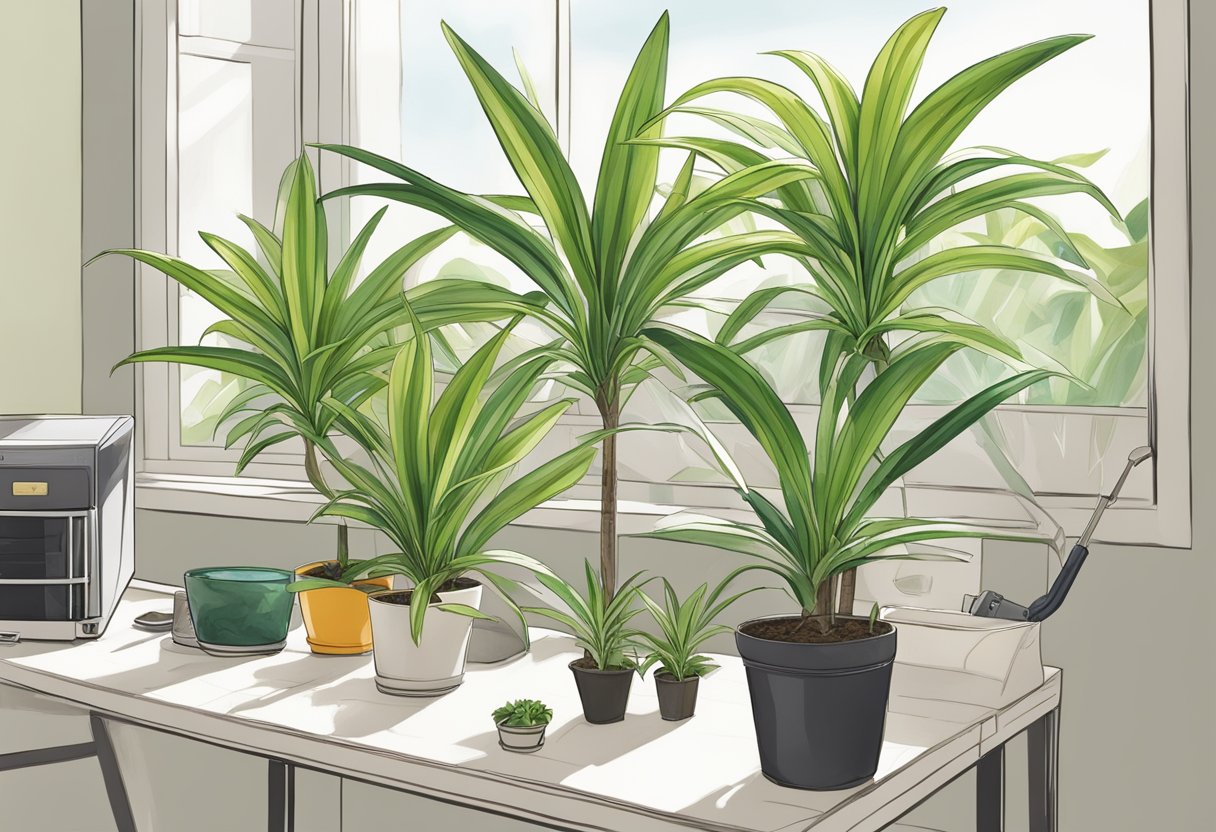
Monitoring Growth and Health
Once the dracaena has been propagated, it is important to monitor its growth and health regularly. This will help ensure that the plant is thriving and that any issues are addressed promptly.
One of the first signs of successful propagation is new growth. As the plant grows, it may require more frequent watering and fertilization. It is important to check the soil moisture regularly and adjust watering as needed. Overwatering can lead to root rot, while underwatering can cause the leaves to turn brown and fall off.
Fertilizer can also be important for the growth and health of the dracaena. A balanced fertilizer can be applied every two to four weeks during the growing season. Be sure to follow the instructions on the fertilizer package, as over-fertilization can lead to burning of the plant.
Addressing Common Issues
Even with careful monitoring, issues may arise with the dracaena. Some common issues include yellowing leaves, brown tips, and pests.
Yellowing leaves can be a sign of overwatering or underwatering, as well as nutrient deficiencies. Adjusting the watering schedule and fertilization can often address these issues. However, if the yellowing persists, it may be a sign of a more serious issue such as root rot.
Brown tips can also be a sign of overwatering or underwatering, as well as low humidity. Increasing humidity levels and adjusting watering can help address these issues. It is also important to ensure that the dracaena is not exposed to direct sunlight, as this can also cause brown tips.
Pests such as spider mites and mealybugs can also be a problem for dracaena. Regularly inspecting the plant and treating with an appropriate insecticide can help address these issues.
If the dracaena becomes too large for its current pot, it may need to be transplanted to a larger container. This should be done during the growing season, and the plant should be watered thoroughly after transplanting.
Advanced Propagation Techniques
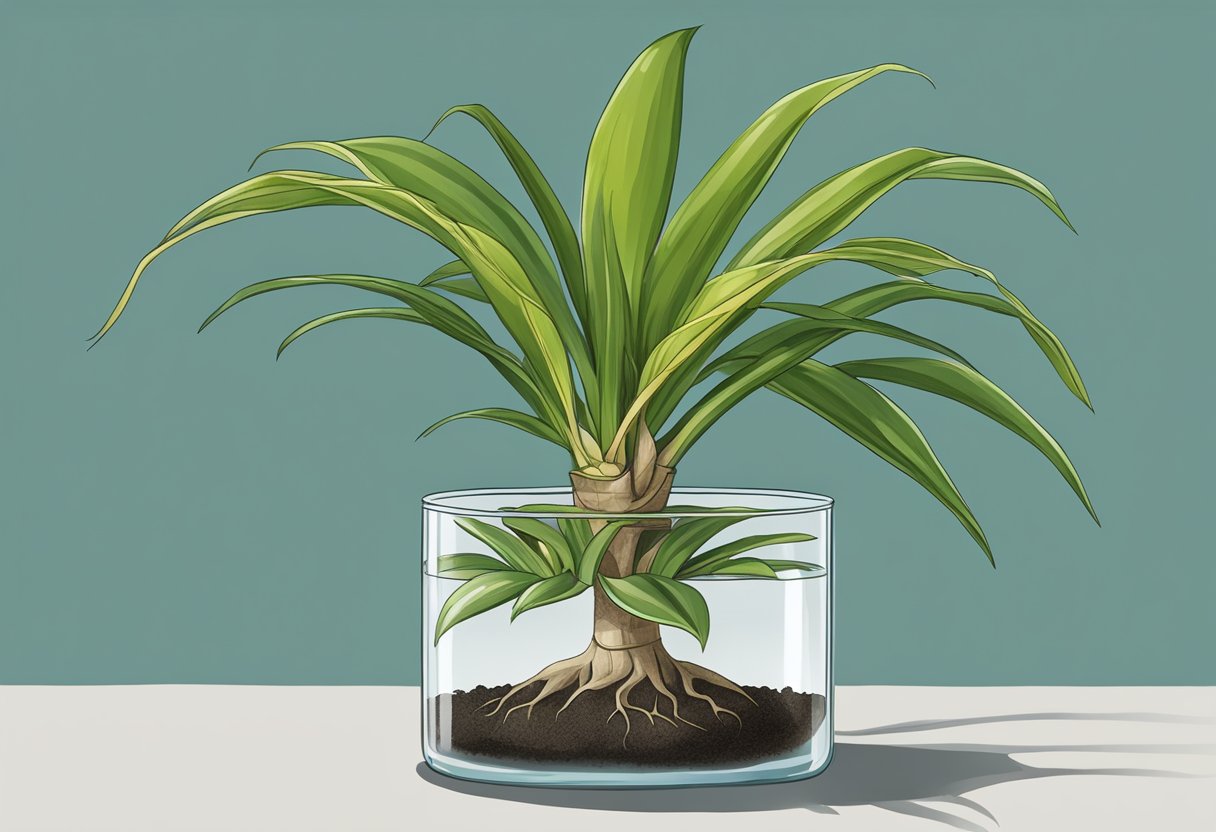
Enhancing Propagation Success
To increase the chances of successful propagation, the propagation pro recommends taking extra care with the parent plant. Before taking cuttings, ensure that the parent plant is healthy and free from pests and diseases. It is also important to prune the parent plant regularly to encourage new growth and increase the number of cuttings that can be taken.
Another way to enhance propagation success is by using a rooting hormone. This hormone can be purchased at most garden centers or online and helps stimulate root growth in the cuttings. Simply dip the cut end of the cutting into the rooting hormone before planting it in soil.
Propagating Rare Varieties
Propagating rare varieties of dracaena can be a challenge, but it is possible with the right techniques. One way to increase the chances of success is by using a greenhouse. The controlled environment of a greenhouse allows for precise temperature and humidity control, which can be essential for the successful propagation of rare varieties.
Another technique that can be used to propagate rare varieties is by using woody plants as a source of cuttings. Woody plants tend to be hardier and more resilient than other types of plants, making them a good choice for propagating rare varieties.
Overall, advanced propagation techniques can be a great way to increase the success rate of dracaena propagation. By taking extra care with the parent plant, using rooting hormone, and utilizing a greenhouse or woody plants, propagating rare varieties can become more achievable.
Frequently Asked Questions
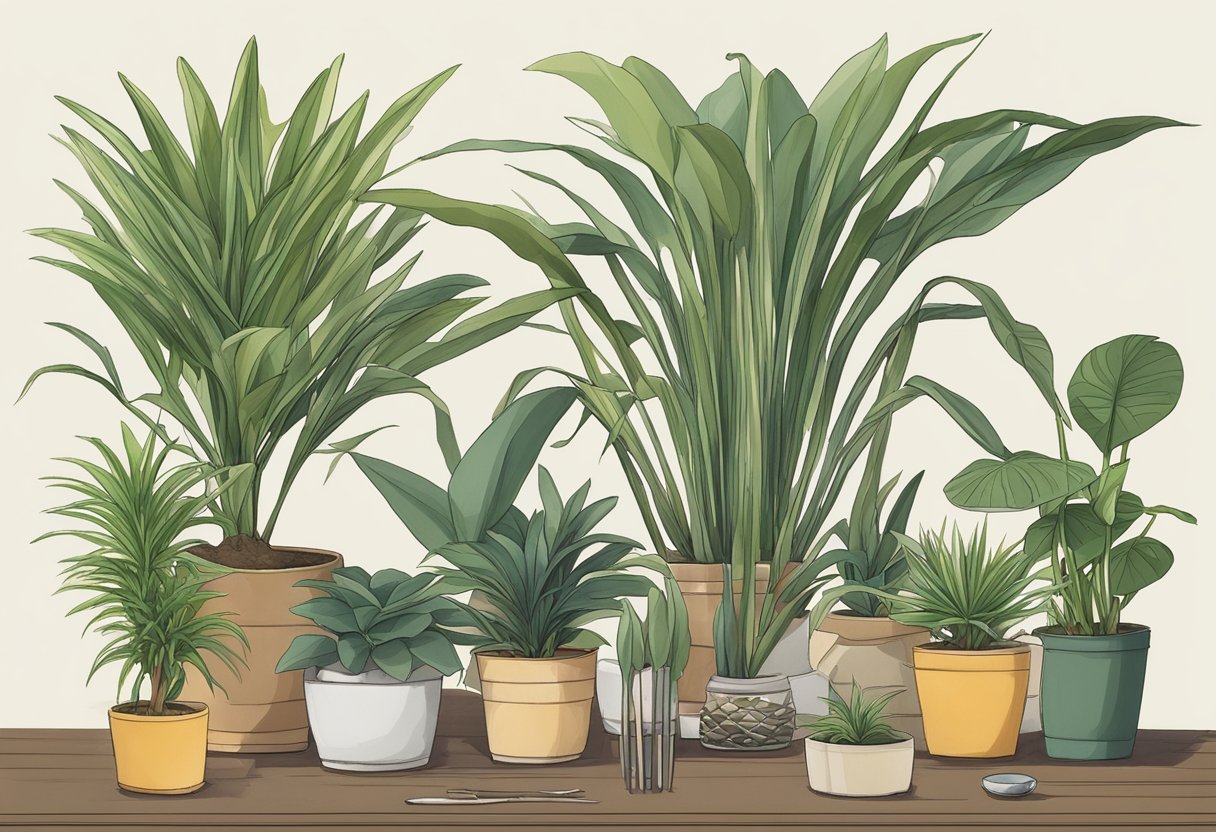
What is the best method to propagate Dracaena marginata from cuttings?
The best method to propagate Dracaena marginata from cuttings is to take stem cuttings that are 4-6 inches long and have at least one node. Remove the lower leaves and dip the cut end in rooting hormone. Plant the cutting in a well-draining potting mix and keep it moist but not waterlogged. Place the pot in a bright, indirect light and cover it with a plastic bag to create a humid environment. Roots should develop within 4-6 weeks.
Can I root Dracaena cuttings directly in water, and how should I do it?
Yes, you can root Dracaena cuttings directly in water. Take stem cuttings that are 4-6 inches long and have at least one node. Remove the lower leaves and place the cut end in a container of water. Change the water every few days to prevent bacterial growth. Once roots have developed, transfer the cutting to a well-draining potting mix and keep it moist but not waterlogged.
What are the steps to propagate Dracaena fragrans in soil?
To propagate Dracaena fragrans in soil, take stem cuttings that are 4-6 inches long and have at least one node. Remove the lower leaves and dip the cut end in rooting hormone. Plant the cutting in a well-draining potting mix and keep it moist but not waterlogged. Place the pot in a bright, indirect light and cover it with a plastic bag to create a humid environment. Roots should develop within 4-6 weeks.
Is it possible to propagate Dracaena from leaves, and if so, how?
It is not possible to propagate Dracaena from leaves alone. However, you can take stem cuttings that have leaves attached and follow the same propagation method as for stem cuttings.
How do I encourage branching after cutting the top off my Dracaena plant?
To encourage branching after cutting the top off your Dracaena plant, make the cut just above a node. The plant will produce new growth from the node. You can also fertilize the plant with a balanced fertilizer to encourage new growth.
What are the key tips for successfully propagating Dracaena Lemon Lime?
The key tips for successfully propagating Dracaena Lemon Lime are to take stem cuttings that are 4-6 inches long and have at least one node, remove the lower leaves, dip the cut end in rooting hormone, plant the cutting in a well-draining potting mix, keep it moist but not waterlogged, place the pot in a bright, indirect light, and cover it with a plastic bag to create a humid environment. Roots should develop within 4-6 weeks.

